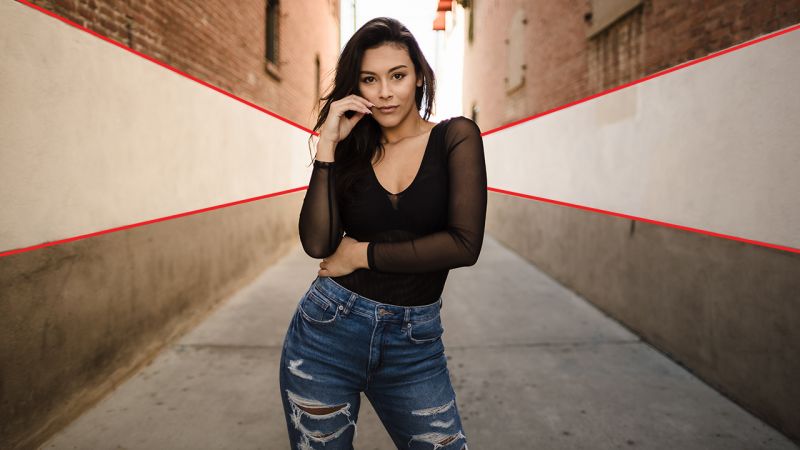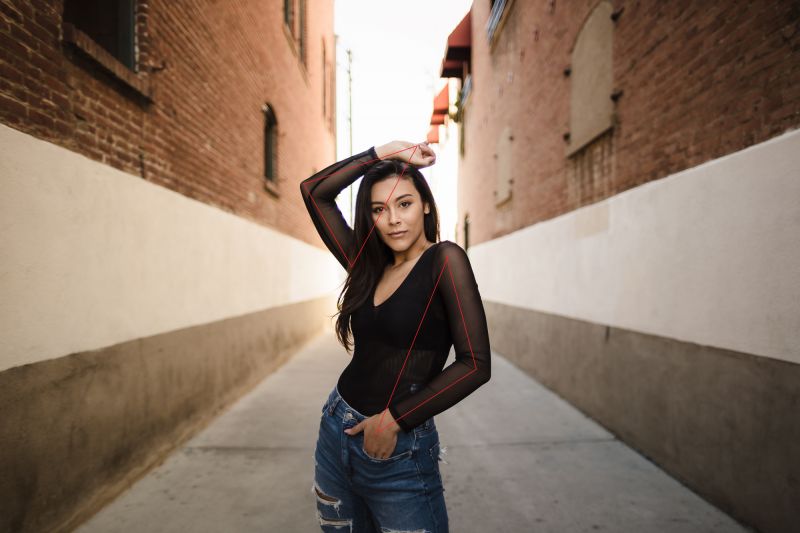In this video, I’m going to show you one of my favorite compositional tricks to level up all your photographs regardless of what you’re shooting, and best of all it’s going to take less than 10 minutes. This is a technique I like to call ‘Compositional Stacking’, not official by any means, but it gets the point across. I use it as a reminder to start with a baseline composition and then add additional compositional techniques until you get to the final image. This is by far going to help you create more thought-provoking imagery that stands out and has levels of creativity. This is one of the main techniques we teach in our Creative Photography course and it has the potential to change the way you capture images. I think it’s much easier shown than explained so make sure you watch the video demonstration with our model Alyssa below.
Photography Composition Tips for Beginners
What I love about this tutorial is that it applies to all skill levels. Photo composition is something we often forget about because we rush through trying to get our lighting and posing on point and end up missing the mark when it comes to challenging our artistic ability. Here are some of my favorite compositional techniques to stack to add interest and layers to a photo.
1. Symmetry
 A textbook lesson you hear when learning about photography composition tips for beginners is the rule of thirds. It’s now more commonly understood by the everyday person because phone cameras have it built into the software. Our first compositional technique is to place Alyssa in a spot in the frame that abides by the rule of thirds. She is in the center column and her body, for the most part, is equally split within the rows.
A textbook lesson you hear when learning about photography composition tips for beginners is the rule of thirds. It’s now more commonly understood by the everyday person because phone cameras have it built into the software. Our first compositional technique is to place Alyssa in a spot in the frame that abides by the rule of thirds. She is in the center column and her body, for the most part, is equally split within the rows.
2. Depth
A commonly overlooked photography composition tips for beginners is to use your lens’s aperture as a tool to create compositional interest. You can either have a shallow depth of field which will help separate the subject from the background or choose to incorporate more of the elements in the photo by dialing in a narrow depth of field. For this shoot, I was on a Canon 24mm Prime lens shooting at f/1.4 to really showcase how depth works as a compositional element.
3. Leading Lines

Another classic photography composition tips for beginners is to find natural lines in your frame that lead the viewer’s eyes to your subject. You can see that I used the alleyway walls in this shot to frame Alyssa, in conjunction with several other compositional techniques. Most of the time, when photographers do use leading lines, they are naturally incorporating multiple compositional techniques already and that creates great visual interest.
4. Highlights
The eye of the viewer will always gravitate to the brightest part of the frame. This is an important note to remember when shooting so you can easily place your subject in that part of the frame and naturally create a point of interest. This is a great technique to use for silhouettes!
5. Perspective
 Here is a technique I have been loving as of late which was greatly inspired by using my phone camera more. For most phones, the camera is located in the top corner which makes it hard to capture interesting angles. If you flip your phone, similar to how if you were to place your camera lens closer to the ground, you can get the camera’s lenses closer to the ground. Here, I am using Alyssa’s placement in the frame and lower perspective to elongate her figure. By switching to portrait orientation, I get a much more exaggerated effect and it helps make her appear as though she is much taller.
Here is a technique I have been loving as of late which was greatly inspired by using my phone camera more. For most phones, the camera is located in the top corner which makes it hard to capture interesting angles. If you flip your phone, similar to how if you were to place your camera lens closer to the ground, you can get the camera’s lenses closer to the ground. Here, I am using Alyssa’s placement in the frame and lower perspective to elongate her figure. By switching to portrait orientation, I get a much more exaggerated effect and it helps make her appear as though she is much taller.
6. Shaping Poses
 Lastly, you can use limbs and the body to help create shape and curves that compliment your settings. A commonly used technique is to create triangles with the arms by placing them on the head or on the hip. You can see a drawn-out demonstration in the image above. This is a common trick used in Hollywood in scenes without subjects as well. In fact, that’s my bonus tip: study tv and film to catch all of these compositional techniques in action and try and dissect why it captivated you. It’s one of my favorite things to do and is a great exercise to go through.
Lastly, you can use limbs and the body to help create shape and curves that compliment your settings. A commonly used technique is to create triangles with the arms by placing them on the head or on the hip. You can see a drawn-out demonstration in the image above. This is a common trick used in Hollywood in scenes without subjects as well. In fact, that’s my bonus tip: study tv and film to catch all of these compositional techniques in action and try and dissect why it captivated you. It’s one of my favorite things to do and is a great exercise to go through.
If you’re looking for more photography composition tips for beginners be sure to check out our Creative Photography course to learn how to be more creative.





Get Connected!